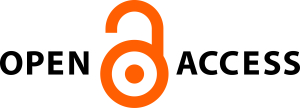Perceptions of Organizational Commitment in Nepalese Insurance Companies and Commercial Banks
Abstract
This study aims to examine the status of organizational commitment (affective commitment, continuance
commitment, and normative commitment) in insurance companies and commercial banks of Nepal. This
study is conducted utilizing a survey methodology with questionnaires serving as the primary tool. Six
insurance companies and six commercial banks are covered by this study. A total of 360 questionnaires—30
in each of the 12 organizations—have been distributed, and 225 (62.5%) of those that have been fully
completed and returned are used for the study. The data are analyzed by using the latest version of the
statistical package for social science (SPSS). Descriptive statistical tools like mean and standard deviation
are used. The one-way analysis of the variance is used for determining the statistical differences between the
organizational commitment dimensions found in two samples (insurance companies and commercial
banks). Based on the results, affective commitment is found at a high level, normative commitment at a
moderate level, and continuance at a low level in Nepalese insurance companies and commercial banks.
Insurance companies show higher affective and normative commitment than commercial banks. Significant
differences in judgments of affective and normative commitment between employees of Nepalese insurance
companies and commercial banks are also revealed by analysis of variance. In fact, firms that have a strong
organizational commitment are better able to keep employees, which put them in a better position to gain the
advantages of a more devoted, engaged, and dependable workforces. Therefore, today's businesses must
design workplaces that encourage more moral and emotional commitment among their employees.


